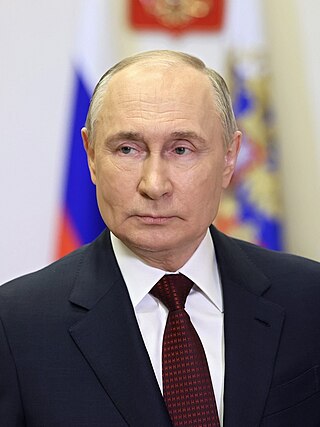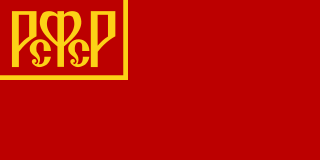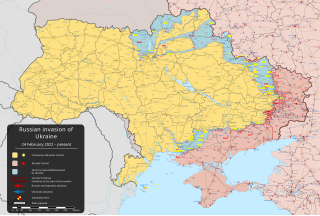| 2006 Professional Rugby League season | |
|---|---|
| Countries | |
| Champions | VVA-Podmoskovye Monino |
This was the second season of the new Russian Professional Rugby League,
| 2006 Professional Rugby League season | |
|---|---|
| Countries | |
| Champions | VVA-Podmoskovye Monino |
This was the second season of the new Russian Professional Rugby League,
| Pos | Team | Pld | W | D | L | PF | PA | PD | Pts |
|---|---|---|---|---|---|---|---|---|---|
| 1 | VVA-Podmoskovye Monino | 12 | 10 | 1 | 1 | 357 | 141 | +216 | 43 |
| 2 | Yenisey-STM Krasnoyarsk | 12 | 10 | 0 | 2 | 388 | 138 | +250 | 42 |
| 3 | Krasny Yar Krasnoyarsk | 12 | 9 | 1 | 2 | 381 | 164 | +217 | 40 |
| 4 | Slava Moscow | 12 | 5 | 1 | 6 | 245 | 235 | +10 | 28 |
| 5 | RC Penza | 12 | 3 | 0 | 9 | 155 | 303 | −148 | 21 |
| 6 | RC Novokuznetsk | 12 | 2 | 1 | 9 | 156 | 324 | −168 | 19 |
| 7 | Universitet Chita | 12 | 1 | 0 | 11 | 161 | 540 | −379 | 15 |
| 2006 Russian Professional League Play-offs | ||
|---|---|---|
| Home | Score | Away |
| Semi-Finals (Two-Legged Matches with Aggregate Score Winning) | ||
| Slava Moscow | 26-76 | VVA-Podmoskovye Monino |
| Krasny Yar Krasnoyarsk | 49-36 | Yenisy-STM Krasnoyarsk |
| Finals (Best of 3 Match Series) | ||
| 3rd Place Play-off Final | ||
| Slava Moscow | 1-2 | Yenisy-STM Krasnoyarsk |
| Championship Final | ||
| VVA-Podmoskovye Monino | 2-0 | Krasny Yar Krasnoyarsk |

Chechnya, officially the Chechen Republic, is a republic of Russia. It is situated in the North Caucasus of Eastern Europe, between the Caspian Sea and Black Sea. The republic forms a part of the North Caucasian Federal District, and shares land borders with the country of Georgia to its south; with the Russian republics of Dagestan, Ingushetia, and North Ossetia-Alania to its east, north, and west; and with Stavropol Krai to its northwest.

Moscow is the capital and largest city of Russia. The city stands on the Moskva River in Central Russia, with a population estimated at 13.0 million residents within the city limits, over 18.8 million residents in the urban area, and over 21.5 million residents in the metropolitan area. The city covers an area of 2,511 square kilometers (970 sq mi), while the urban area covers 5,891 square kilometers (2,275 sq mi), and the metropolitan area covers over 26,000 square kilometers (10,000 sq mi). Moscow is among the world's largest cities, being the most populous city entirely in Europe, the largest urban and metropolitan area in Europe, and the largest city by land area on the European continent.

Russia, or the Russian Federation, is a country spanning Eastern Europe and North Asia. It is the largest country in the world by area, extending across eleven time zones and sharing land borders with fourteen countries. It is the world's ninth-most populous country and Europe's most populous country. The country's capital as well as its largest city is Moscow. Saint Petersburg is Russia's second-largest city and cultural capital. Other major cities in the country include Novosibirsk, Yekaterinburg, Nizhny Novgorod, Chelyabinsk, Krasnoyarsk, Kazan, Krasnodar and Rostov-on-Don.

Russian is an East Slavic language, spoken primarily in Russia. It is the native language of the Russians and belongs to the Indo-European language family. It is one of four living East Slavic languages, and is also a part of the larger Balto-Slavic languages. It was the de facto and de jure official language of the former Soviet Union. Russian has remained an official language in independent Russia, Belarus, Kazakhstan, Kyrgyzstan, and Tajikistan, and is still commonly used as a lingua franca in Ukraine, Moldova, the Caucasus, Central Asia, and to a lesser extent in the Baltic states and Israel.

The Armed Forces of the Russian Federation, commonly referred to as the Russian Armed Forces, are the military of Russia. In terms of active-duty personnel, they are the world's fifth-largest military force, with 1.15 million and at least two million reserve personnel. According to the United States' Central Intelligence Agency (CIA), "Russia plans to expand its active personnel force to 1.5 million by 2026, which will make it the third largest in the world, after China and India." The country has three primary branches of service: the Ground Forces, the Navy, and the Aerospace Forces, as well as two independent arms of service: the Strategic Rocket Forces and Airborne Forces. In addition, the Special Operations Forces Command was established in 2013, with an estimated strength in 2022 of 1,000, possibly with additional supporting staff.

The Russian Revolution was a period of political and social change in the Russian Empire, starting in 1917. This period saw Russia abolish its monarchy and adopt a socialist form of government following two successive revolutions and a bloody civil war. The Russian Revolution can also be seen as the precursor for the other European revolutions that occurred during or in the aftermath of World War I, such as the German Revolution of 1918–1919.

The Soviet Union, officially the Union of Soviet Socialist Republics (USSR), was a transcontinental country that spanned much of Eurasia from 1922 to 1991. It was a successor state to the Russian Empire that was nominally organized as a federal union of fifteen national republics, the largest and most populous of which was the Russian SFSR; in practice both its government and economy were highly centralized until its final years. As a one-party state governed by the Communist Party of the Soviet Union, it was a flagship communist state.

Ukraine is a country in Eastern Europe. It is the second-largest European country after Russia, which borders it to the east and northeast. It also borders Belarus to the north; Poland, Slovakia, and Hungary to the west; and Romania and Moldova to the southwest; with a coastline along the Black Sea and the Sea of Azov to the south and southeast. Kyiv is the nation's capital and largest city, followed by Kharkiv, Dnipro and Odesa. Ukraine's official language is Ukrainian; Russian is also widely spoken, especially in the east and south.

Vladimir Vladimirovich Putin is a Russian politician and former intelligence officer who is the president of Russia. Putin has held continuous positions as president or prime minister since 1999: as prime minister from 1999 to 2000 and from 2008 to 2012, and as president from 2000 to 2008 and since 2012. He is the longest-serving Russian or Soviet leader since Joseph Stalin.

Catherine II, most commonly known as Catherine the Great, was the reigning empress of Russia from 1762 to 1796. She came to power after overthrowing her husband, Peter III. Under her long reign, inspired by the ideas of the Enlightenment, Russia experienced a renaissance of culture and sciences, which led to the founding of many new cities, universities, and theatres, along with a large-scale immigration from the rest of Europe and with the recognition of Russia as one of the great powers of Europe.

The Crimean War was fought from October 1853 to February 1856 between the Russian Empire and an ultimately victorious alliance of the Ottoman Empire, France, the United Kingdom, and Sardinia-Piedmont.

Georgia is a transcontinental country in Eastern Europe and West Asia. It is part of the Caucasus region, bounded by the Black Sea to the west, Russia to the north and northeast, Turkey to the southwest, Armenia to the south, and Azerbaijan to the southeast. Georgia covers an area of 69,700 square kilometres (26,900 sq mi). It has a population of 3.7 million, of which over a third live in the capital and largest city, Tbilisi. Georgians, who are indigenous to the region, constitute a majority and a titular nation in Georgia.

The Russian Empire, also known as Tsarist Russia, Tsarist Empire or Imperial Russia, and sometimes simply as Russia, was a vast realm that spanned most of northern Eurasia from its proclamation in November 1721 until its dissolution in March 1917. At its height in the late 19th century, it covered about 22,800,000 square kilometres (8,800,000 sq mi), roughly one-sixth of the world's landmass, making it the third-largest empire in history, surpassed only by the British and Mongol empires; it also held colonies in North America between 1799 and 1867. The empire's 1897 census, the only one it conducted, found a population of 125.6 million with considerable ethnic, linguistic, religious, and socioeconomic diversity.

Saint Petersburg, formerly known as Petrograd and later Leningrad, is the second-largest city in Russia after Moscow. It is situated on the River Neva, at the head of the Gulf of Finland on the Baltic Sea. The city had a population of roughly 5.6 million residents as of 2021, with more than 6.4 million people living in the metropolitan area. Saint Petersburg is the fourth-most populous city in Europe, the most populous city on the Baltic Sea, and the world's northernmost city of more than 1 million residents. As Russia's Imperial capital, and a historically strategic port, it is governed as a federal city.

The Russian Soviet Federative Socialist Republic, previously known as the Russian Soviet Republic and the Russian Socialist Federative Soviet Republic, as well as being unofficially referred to as Soviet Russia, the Russian Federation, or simply Russia, was an independent federal socialist state from 1917 to 1922, and afterwards the largest and most populous constituent republic of the Soviet Union (USSR) from 1922 to 1991, until becoming a sovereign part of the Soviet Union with priority of Russian laws over Union-level legislation in 1990 and 1991, the last two years of the existence of the USSR. The Russian SFSR was composed of sixteen smaller constituent units of autonomous republics, five autonomous oblasts, ten autonomous okrugs, six krais and forty oblasts. Russians formed the largest ethnic group. The capital of the Russian SFSR and the USSR as a whole was Moscow and the other major urban centers included Leningrad, Stalingrad, Novosibirsk, Sverdlovsk, Gorky and Kuybyshev. It was the first socialist state in the world.

Nicholas II or Nikolai II was the last reigning Emperor of Russia, King of Congress Poland and Grand Duke of Finland from 1 November 1894 until his abdication on 15 March 1917. During his reign, Nicholas gave support to the economic and political reforms promoted by his prime ministers, Sergei Witte and Pyotr Stolypin. He advocated modernisation based on foreign loans and close ties with France, but resisted giving the new parliament major roles. Ultimately, progress was undermined by Nicholas's commitment to autocratic rule, strong aristocratic opposition and defeats sustained by the Russian military in the Russo-Japanese War and World War I. By March 1917, public support for Nicholas had collapsed and he was forced to abdicate, thereby ending the Romanov dynasty's 304-year rule of Russia (1613–1917).

The Russo-Ukrainian War is an ongoing war between Russia and Ukraine, which began in February 2014. Following Ukraine's Revolution of Dignity, Russia occupied and annexed Crimea from Ukraine and supported pro-Russian separatists fighting the Ukrainian military in the Donbas war. The first eight years of conflict also included naval incidents, cyberwarfare, and heightened political tensions. In February 2022, Russia launched a full-scale invasion of Ukraine and began occupying more of the country.

This is a timeline of events related to Russian interference in the 2016 United States elections.

The Robert Mueller special counsel investigation was an investigation into 45th U.S. president Donald Trump regarding Russian interference in the 2016 United States elections and was conducted by special prosecutor Robert Mueller from May 2017 to March 2019. It was also called the Russia investigation, the Mueller probe, and the Mueller investigation.

On 24 February 2022, Russia invaded Ukraine in an escalation of the Russo-Ukrainian War that started in 2014. The invasion became the largest attack on a European country since World War II. It is estimated to have caused tens of thousands of Ukrainian civilian casualties and hundreds of thousands of military casualties. By June 2022, Russian troops occupied about 20% of Ukrainian territory. From a population of 41 million in January 2022, about 8 million Ukrainians had been internally displaced and more than 8.2 million had fled the country by April 2023, creating Europe's largest refugee crisis since World War II. Extensive environmental damage caused by the war, widely described as an ecocide, contributed to food crises worldwide.